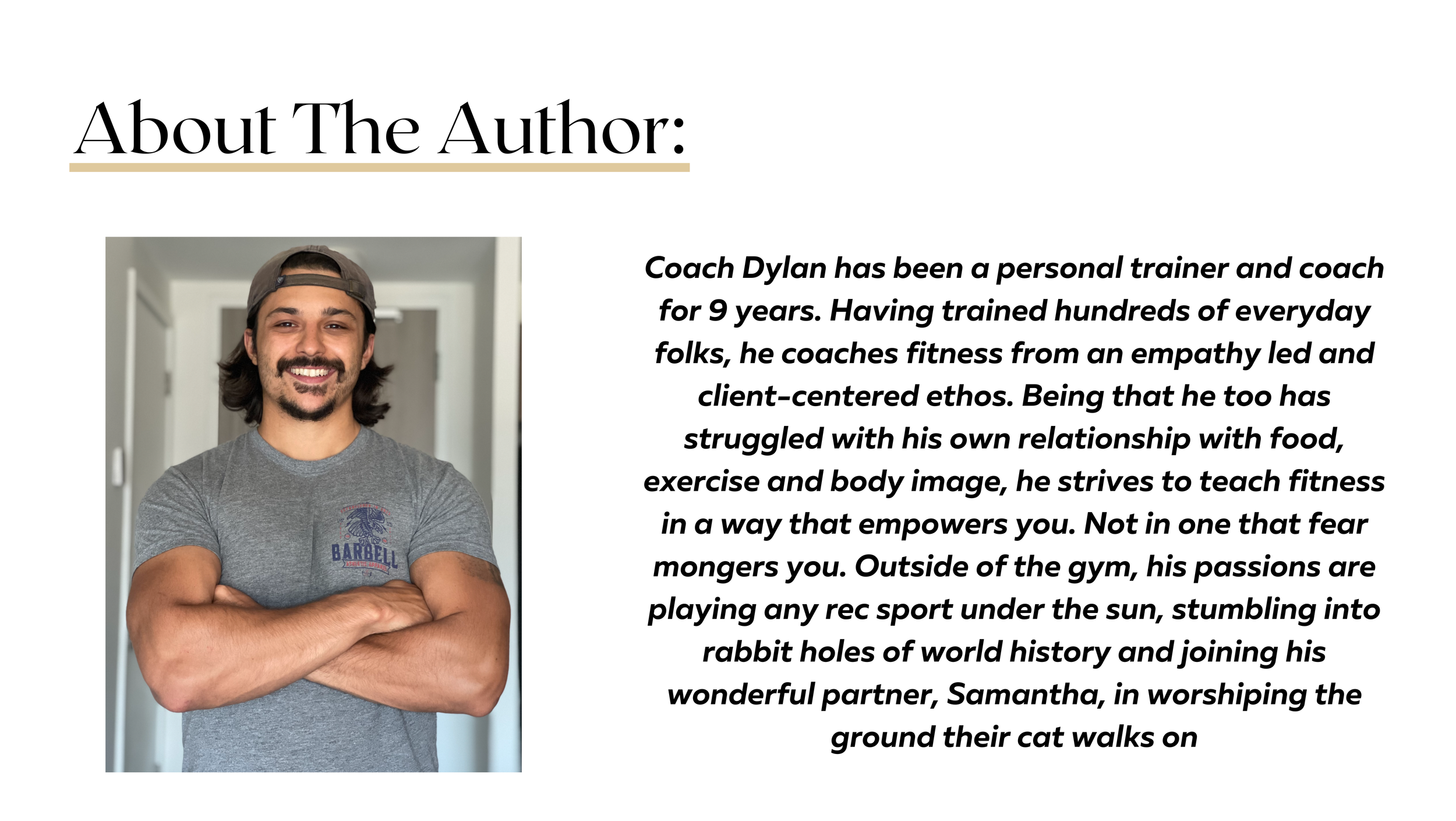Exercises to Train Your Oft-Neglected Hip Muscles
Add these into your program to get your hips stronger in diverse ways
8 min read
By: Dylan Dacosta
I took a yoga class recently with my partner. It didn’t go as well as I had expected. I knew I wasn’t as flexible as I would like, but damn, if it wasn’t more humbling than anticipated.
I can squat and deadlift upwards of 300 pounds when I’m training my lower body rigorously. But this class reminded me that I don’t train my hips in any sort of diverse way.
I train like a meathead, and I say that with no shame. Regardless, this serving of humble pie encouraged me to revisit alternative hip-strengthening exercises I’ve used with myself and some clients.
This guide is going to skip over the big dogs of hip training. Primarily squatting, lunging and hinging. Training those movements hard is awesome.
I'd strongly suggest you do if you’re not already doing so. But this will be centred around some less conventional ways to train your hips and hitting those muscles less exposed to stimulus in typical gym exercises.
Let’s get to it.
Simple Anatomy
I’ll start by reviewing some basic anatomy of the hips and ways we can train them.
Movement will generally take place in one of three planes.
Sagittal
Frontal
Transverse
For sagittal, think of moving your hips forward and back. A Romanian Deadlift would be primarily in the sagittal plane.
For frontal, think of moving your hips side to side. A lateral split squat would involve a lot of frontal plane loading.
For transverse, think of rotating your hips. A seated abduction/adduction machine would involve your hips moving through the transverse plane.
If you haven’t pieced it together yet, most of the training we do in the gym for our lower body primarily takes place in the sagittal plane. When it comes to the hips specifically, most of these exercises also train hip extension.
Squats, deadlifts, lunges and hip thrusts are all primarily in the sagittal plane but also train the hip extensors (i.e. your glutes, hamstrings, and adductor magnus.)
The hip flexors are involved, but they are the antagonists in these movements. Similar to the role your biceps play in tricep exercises. They’re involved but aren’t strictly being trained.
With that out of the way, we will talk about other ways to train your hips, the primary muscles involved and some exercises to train them.
Hip Flexion
The thing you’ve most likely been told about your hip flexors is that they’re short and tight from sitting so much. I’m no physiotherapist, so I won’t address that claim. One thing I am comfortable saying though, is that you likely don’t train them directly.
You have several hip flexors. The primary ones are:
Iliacus
Psoas Major
Rectus Femoris
You have other muscles supporting hip flexion at differing angles and positions, but these are your main three.
One of the reasons why most folks don’t train these movements directly is that there aren’t a lot of machines and movements in the gym that makes it easy to do. So we will be relying on cables mostly to load these movements.
Essentially for all these movements, bands can be used as well. I prefer cables since they give you a more consistent load, but if you only have bands, you can still train your hips effectively.
Exercise 1: Lying Cable/Banded Hip Flexion
For this exercise, you can use a band or a cable. If you use a cable, you can use an ankle cuff, which is the easiest way or place your foot through the handle.
Lie down on your back with your legs straight.
Keep your abs braced and drive your knee to your chest against the resistance.
Keep your shin parallel to the floor to keep more tension on your hips
Repeat.
Below is a video using the cable.
Exercise 2: Lying Cable/Banded Straight-Legged Hip Flexion
For this exercise, you can also use bands or a cable. The difference here is that you won’t be bending your knee. This will get your rectus femoris more involved since it’s also a knee extender (It’s one of your quads).
You can use a band around your ankles or use a cable in the same way as the last exercise.
Lie down on your back with your legs straight.
Keep your abs braced and drive your foot up to the sky while keeping your knee locked out.
Repeat.
Below is a video example using a cable.
Exercise 3: Captains Chair Leg Raises (bent or straight knees)
This is one you may have done before. It’s commonly thought of as a core exercise, which it partially is, but it also trains the hip flexors quite a bit.
Like the exercises above, knee position will dictate whether the rectus femoris will be involved.
The straight-leg version will have rectus femoris, but the knee-bent version won’t have much. Also, the straight-legged versions will be more challenging in general.
Getting into the machine, place your forearms on the pads to elevate your body off the ground.
Think of bracing your abs (like you were about to be punched), as keeping your trunk more stable will have your hip flexors working more. If your trunk flexes and extends a lot, your abs will do more work (not bad, just not the focus here.)
Drive either knees or toes up the ceiling, depending on your version.
Keep your trunk braced the whole time, come down with control and repeat.
Below is a video example with the bent knee and straight leg versions.
Hip Abduction
When it comes to strength training in general, the sagittal plane dominates. It’s not surprising that this holds true in hip training as well.
Hip extension is by far the most trained hip movement. We just talked about its antagonist, hip flexion. Now, we’ll talk about some frontal plane work.
Abduction is an easy word to remember in exercise science because it relates to taking a joint away from your midline. Abducting the hip means moving it laterally away from your midline.
Three major hip abductors are your:
Glute medius
Glute minimus
Tensor fasciae latae
Other muscles are involved in hip abduction, but these three will be the main ones you’re training. Let’s get into some exercises.
Exercise 1: Supine Cable Hip Abduction
This is great for loading up the hip abductors and taking them through a solid range of motion since you can take these muscles into more of a stretched position.
Attach the cable to the outside foot or cuff on the outside ankle while lying supine on the floor.
Open up the inside leg to allow the working leg to go through a more extensive range of motion.
Drive your working leg away from your body as far as possible while maintaining control.
Aim to keep foot point up to avoid any rotation up hips
Repeat.
See a video example below.
Exercise 2: Side lying hip abductions (body weight, band or ankle weights)
This one is very similar to the supine version. One downside is that if you do this off a bench where you can lower your working leg more, the range will be less. But this is a great and portable alternative if you don’t have access to a cable.
Lie on your side with your legs stacked but your bottom knee bent.
Keep your trunk braced and drive your top foot up as high as possible.
Focus on driving your heel up to avoid rotation of the foot.
Repeat.
You can put yourself into a side plank to progress. You can also load it up with ankle weights or with a mini band too.
Below is a bodyweight example off a bench.
Exercise 3: Glute med cable kickbacks
This one will bias the glute medius the most, and it’s likely the one you see the most in gyms today. It’s not much different than the supine cable hip abductions other than the cable angle.
This angle is more of a 45 degree one, and it’s meant to bias the glute medius more.
Attach the cable to your ankle cuff or around your foot.
Stand with a hip hinge, holding onto to machine.
Drive your heel back into hip extension and squeeze your bum.
Come back with control and repeat.
Keep trunk braced to minimize torso movement.
See a video example below.
Hip Adduction
Opposite to the abductors, the adductors pull the hip toward the midline. Remembering this is easy since you’re “adding” to the midline. These muscles make up a lot of you know as your groin muscles. Training them can be great for exposing these muscles to load and perhaps managing injury risk.
We all know how awful it is to pull your groin. While no exercise can prevent injury, having strong tissue will surely only help.
Your primary hip adductors are:
Pectineus
Adductor longus
Gracilis
Adductor brevis
Adductor magnus
Exercise 1: Supine cable hip adduction
This is great for loading the adductors through a deep range of motion. It also doesn’t require a lot of strength, so you can start with a low weight and build up from there.
Lie supine with a cable attached to the outside of your working foot.
Get your groin into a stretched position.
Keep your trunk braced and drive your working foot toward your midline.
Keep your toes pointing up the whole time to avoid hip rotation.
Control back into a stretched position and repeat.
See a video example below.
Exercise 2: Copenhagen Planks
The last one we’ll go over is the Copenhagen Plank. This is also more core since it can be used as a progression of the side plank with trains your obliques.
This one is also quite challenging, so starting with the regressed version is advised. You can do these for longer holds or just for reps.
Use a bench or chair to elevate your top leg.
Use a bent knee for the regressed version and a straight leg for a more challenging one.
Squeeze your bum and brace your trunk to keep your torso neutral.
Drive your top leg (knee or foot) into the bench to lift yourself into a side plank.
Hold for as long as possible, or do reps without a long hold.
See video examples of the bent knee and straight leg versions below.
Applications
In terms of applying these to your program, this doesn’t need to be complicated. A similar approach to your other strength training should be applied.
Focus on progressive overload. This means you aim to do more reps, weight, and sets as time passes.
This increase over time will drive strength and hypertrophy adaptations. If you don’t know how to do this, check out this article.
Start with higher reps for practice if you’ve never done these movements. Once again, this is not a hard rule, but doing high reps for practice is a wise idea if these are all new.
Train hard and aim to get stronger and more efficient! If you want these muscles/movements to strengthen, you better train them hard.
You should expect little results here if all your sets are easy and far from failure. Remember, this is still strength training, even if it is atypical.
Cheers,
Coach Dylan 🍻








